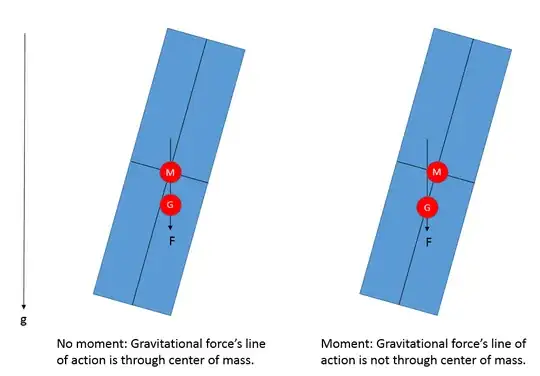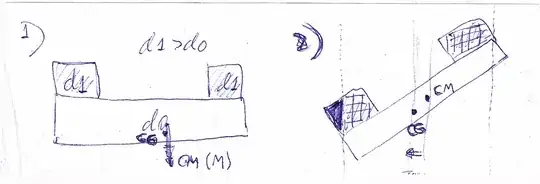I was reading this answer about center of gravity vs. center of mass and it stated:
Consider the Sears Tower. Its CG is about 1 millimeter below its CM. The reason why is because the base of the tower is closer to the center of the Earth than the top of the tower (by 442 m), and therefore receiving a slightly higher pull of gravity than the top of the tower. As a result, the CG is closer the the ground than the CM, because the part of the tower below the CM is being pulled by gravity (slightly) harder than the part of the tower above the CM
For an object standing up straight, it's quite intuitive and obvious that the CG will a distance away from the CM in a direction aligned with the direction of the gravitational pull. For an object that is at angle relative to the gravitational field (think of a very tall Leaning Tower of Pisa), it's not obvious if the CG would be "lower" in a direction aligned with gravity or along the geometric center of the tower. If the latter, it seems there would be a moment induced by the gravitational force that would tend to align the tower with the gravitational field (see graphic).

Which case, if either, is right?
